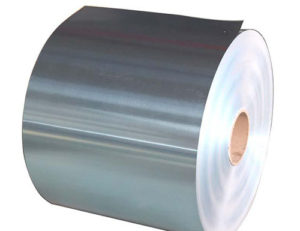As the most abundant element in the crust, aluminium exits in our lives in many kinds of formations. The application of aluminium alloy is the most popular. The density of A-alloy is low while the intensity high which is almost surpassing the one of high-grade steel. The nature of plasticity is good with which could produce to different formations with good performance on electroconductibility, conductivity on heat and corrosion resistance.

Introduction of Aluminium Alloy
Aluminium alloys (or aluminum alloys; see spelling differences) are alloys in which aluminium (Al) is the predominant metal. The typical alloying elements are copper, magnesium, manganese, silicon, tin and zinc. There are two principal classifications, namely casting alloys and wrought alloys, both of which are further subdivided into the categories heat-treatable and non-heat-treatable. About 85% of aluminium is used for wrought products, for example rolled plate, foils and extrusions. Castaluminium alloys yield cost-effective products due to the low melting point, although they generally have lower tensile strengths than wrought alloys. The most important cast aluminium alloy system is Al–Si, where the high levels of silicon (4.0–13%) contribute to give good casting characteristics. Aluminium alloys are widely used in engineering structures and components where light weight or corrosion resistance is required
With the technology development and progress on the production of aluminum, the advantages of A-alloy will be magnified such as the increasing production and marketing. In the A-alloy productions, the demanding of aluminum sheet and belt is also increasing on the big stuffs like spaceships, airplanes, aircraft carriers while the small things like food cases, tags and cellphones and elsewhere.
Following are the classification of A-alloy which is classified by the content of elements. Pure Al 1 in which the content of aluminum is above 99.00% is with good performance on electroconductibility, conductivity on heat and corrosion resistance. A-alloy 2 in which the content of copper is the main element is with good performance on cutability, high intensity, but low corrosion resistance. The A-alloy 3 in which the manganese is the main element is with high intensity, good corrosion resistance and also, the conductivity on heat is better than the one of pure Al 1. A-alloy 4 which mainly contains silicon is with good heat resistance and wear-resisting. A-alloy 5 which mainly contains magnesium is with medium intensity, corrosion resistance and good welding character. A-alloy 6 in which the main elements are magnesium and silicon and the strength phase being the Mg2Si is with great medium intensity structure alloy and good welding character and processability. A-alloy 7 which mainly contains zinc has high intensity, corrosion resistance but low welding character. It is good to applied in high intensity materials. A-alloy 8 in which the main elements are other alloy elements are mainly used on aluminium sheet and bottle cap etc.
No comments:
Post a Comment